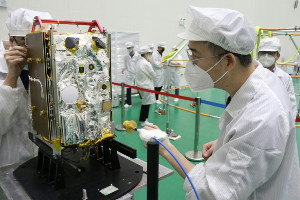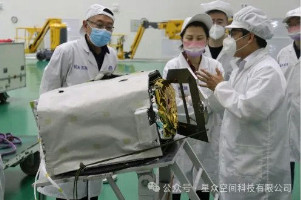| Spacecraft | Dalian-1 Lianli (Dalian-1/Lianli) |
|---|---|
| Spacecraft type | CubeSat |
| Units or mass | 12U |
| Mass in kg | 17 kg |
| Status | Reentry 2024-04-23. Was operational (Orbit raised over 20 km and picture shared by Xiaozhou Yu on LinkedIn on 2024-03-28) |
| Launched | 2023-05-10 |
| NORAD ID | 58816 |
| Deployer | Ultralight Multiple Satellites Deployers (UMSD) |
| Launcher | Long March 7 (Tianzhou) |
| Deployment | Deployed from Tianzhou on 2024-01-18 |
| Organisation | Dalian University of Technology |
| Institution | Company |
| Entity | Commercial |
| Headquarters | China |
| Oneliner | |
| Description | |
| Results | |
| Notes |
NB! The size of the satellite needs further verification. Extrusions look much larger than a typical CubeSat. |
| Sources | [1] [2] [3] [4] [5] [6] [7] [8] [9] |
| Photo sources | [1] [2] [3] |
| Space photos |
Last modified: 2024-12-15





